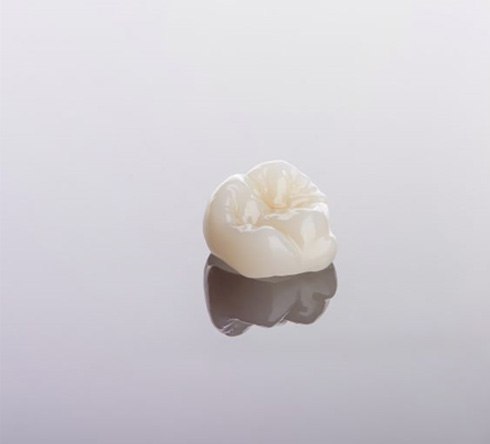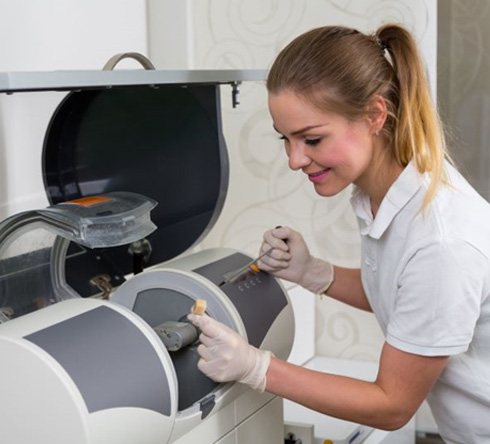
Get Started? Request an Appointment
Traditionally, designing and creating a dental crown requires at least two dental appointments. Today, though, technology is available that can streamline the process. Here at Fantastic Smiles, our Fort Valley team offers CEREC same-day dental crowns. These beautiful, durable, and functional crowns can restore your smile in a single visit to our office. Would you like to learn more about CEREC restorations? Read this page, and then get in touch with us when you are ready to schedule your appointment.


A dental crown is a tooth-shaped cap that fits over the entire portion of a tooth that is visible above the gumline. The purpose of crowns is usually to restore the function and appearance of damaged teeth while protecting them from further harm. They can also be used to reduce sensitivity and to enhance a patient’s smile.
Traditionally, crowns are fabricated in a third-party dental laboratory, which crafts restorations out of metals, porcelain, or other materials. CEREC crowns are different. They are made right here in our office. We have advanced scanning technology and an in-office ceramic milling machine that create high-quality restorations in a single dental appointment.

To prepare your tooth for a crown, we will likely have to remove a portion of its enamel. We use local anesthetic to make this part of your treatment as comfortable as possible. Once the tooth is ready, we use an intraoral scanner to take a digital impression of your mouth.
Dr. Marable then uses advanced software to design the crown. Once the design is finalized, our milling unit creates your restoration out of a single block of high-quality dental ceramic. We always verify that the fit and color of CEREC crowns meet our expectations before we permanently cement them onto a prepared tooth.
From beginning to end, the entire process usually takes just a couple of hours. You can literally arrive at our office with a damaged tooth and leave with a fully restored smile!

CEREC crowns offer several benefits over their traditional counterparts:
